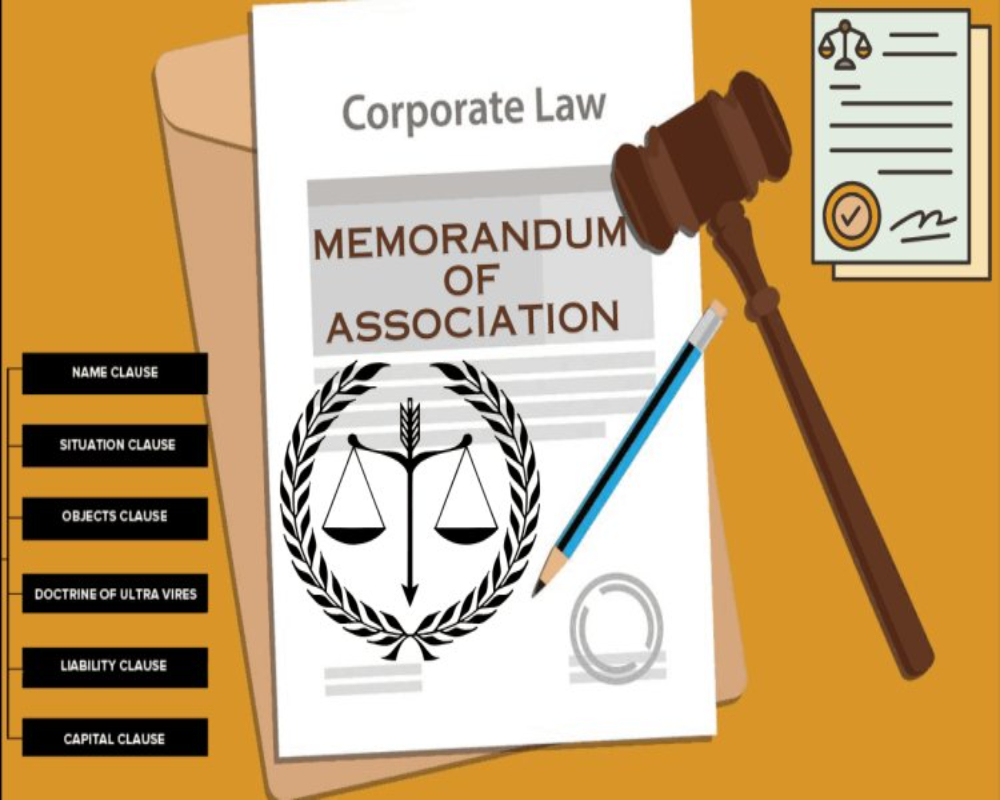Introduction
The Memorandum of Association (MoA) is a foundational legal document that defines the very existence of a company. For a Section 8 Company, which is formed under the Companies Act, 2013 for promoting charitable and not-for-profit objectives, the MoA carries even greater significance. It acts as the company’s constitution, laying out its core purpose, structural boundaries, and the conditions under which it will operate. The MoA must align with the principles of non-profit service, transparency, and social good. It serves as the reference point for regulators, stakeholders, and courts in understanding the company’s legal framework and intent.
Legal Foundation and Purpose
The Memorandum of Association is a mandatory document required during the incorporation of a Section 8 Company. It must be submitted in the format prescribed under Schedule I, Table H of the Companies Act, 2013. The MoA explicitly states the company’s objectives, which must fall within the scope of Section 8 of the Act — that is, promoting commerce, art, science, education, religion, charity, social welfare, or environmental protection, without any intention of profit distribution. The primary purpose of the MoA is to declare to the public and the Registrar of Companies (ROC) that the company exists only to serve public welfare and will not operate for personal gain.
Key Clauses in the MoA of a Section 8 Company
The MoA of a Section 8 Company typically includes the following essential clauses:
Name Clause
This clause specifies the name of the company. Unlike regular companies, Section 8 Companies are not required to use the suffix “Private Limited” or “Limited.” Instead, they may use words like “Foundation,” “Association,” “Federation,” or “Council,” reflecting their not-for-profit nature. The name must be approved by the ROC and must not be identical or closely resembling any existing registered entity.
Registered Office Clause
This clause states the state in India where the registered office of the company is located. It determines the jurisdiction of the ROC with which the company will be registered and where official records and notices will be served.
Objects Clause
This is the most critical clause for a Section 8 Company. It details the main objects and ancillary objectives that the company will pursue. These must strictly align with the permissible charitable categories under Section 8. The clause should clearly indicate that the company will not carry on business for profit and will reinvest all income for achieving its stated goals.
Liability Clause
The liability clause declares that the liability of the members is limited. This means that the members are not personally liable for the debts of the company beyond the amount they have agreed to contribute to the assets of the company in the event of its winding up.
Capital Clause (if applicable)
Though there is no minimum capital requirement for a Section 8 Company, if the company proposes to have share capital, this clause must detail the authorized share capital and its division into shares of fixed value. If the company is limited by guarantee and does not have share capital, the capital clause may be omitted, and a guarantee clause is included instead.
Subscription Clause
This clause includes the names, addresses, and occupations of the subscribers to the Memorandum. It also indicates the number of shares (if any) taken by each subscriber. In the case of a company limited by guarantee, it states the amount each member undertakes to contribute to the company’s assets if it is wound up.
Declaration and Undertaking Clause
In the context of a Section 8 Company, the MoA also contains an undertaking that no portion of the income or property of the company shall be paid or transferred directly or indirectly by way of dividend, bonus, or otherwise to any member or director. It also confirms that any alteration to the MoA shall be subject to the prior approval of the central government.
Importance in Licensing and Governance
The MoA is not just a registration document but also a licensing tool. When a company applies for a Section 8 license using Form INC-12, the MoA is thoroughly examined by the ROC to ensure that the stated objectives qualify for charitable status. Furthermore, during the company’s operation, all decisions, programs, and financial allocations must align with the objects clause of the MoA. Any deviation could lead to revocation of the Section 8 license or disqualification of tax-exempt status.
Amendment of MoA
If a Section 8 Company wishes to amend any part of its MoA, especially the objects clause, it must follow a specific legal procedure. This includes passing a special resolution and obtaining prior approval from the central government, reflecting the importance of the MoA in defining the company’s charitable identity.
Conclusion
The Memorandum of Association is the legal backbone of a Section 8 Company, articulating its mission, scope, and operational boundaries. It embodies the company’s public commitment to charitable purposes and acts as a binding document for both internal governance and external accountability. Drafting it with precision and foresight is essential, as it not only determines the company’s eligibility for incorporation and tax exemptions but also guides its long-term strategy and compliance obligations. For any organization aspiring to serve society through a formal and legally recognized structure, the MoA is the first and most important step in defining its identity and integrity.
Hashtags
#MemorandumOfAssociation #Section8Companies #NonProfit #CompanyFormation #LegalDocuments #CorporateLaw #NGO #SocialEnterprise #BusinessStructure #CharitableOrganizations #CompanyRegistration #IndiaBusiness #Compliance #SocialImpact #LegalAdvice #BusinessLaw #Startups #Entrepreneurship #NonProfitSector #CompanyCompliance


0 Comments